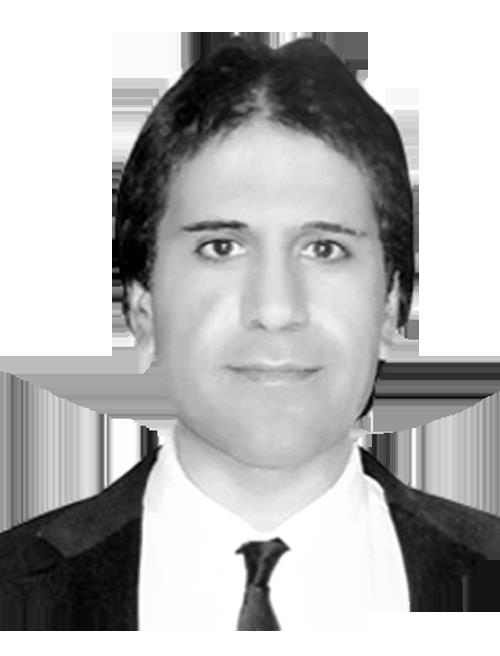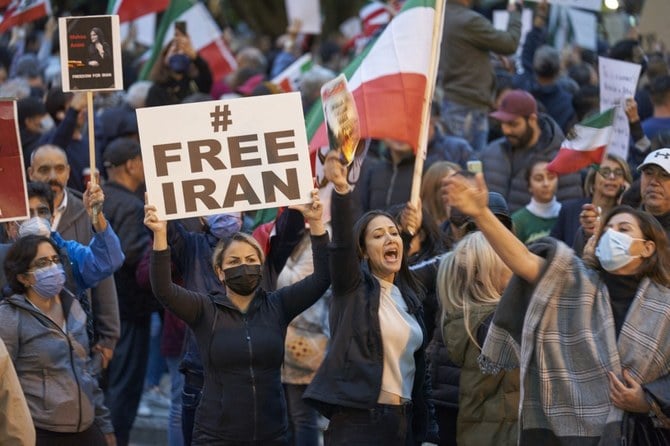
The ongoing protests in Iran are not driven by specific demands and grievances like the others we have seen over the past five years, and they are not political reactions like the Green Revolution of 2009 either. When an elderly woman dares to take her headscarf off, goes out into the streets of the city of Rasht, and chants that she wants the man who heads the regime dead, it means that this wave of protests is propelling a cultural and social shift in the country.
These protests threaten the nature of the Iranian regime more than anything that has happened since the Islamic Republic was established. They will directly impact the ongoing preparations for the transition period that will follow the Supreme Leader’s departure. The death of the young Kurdish woman Mahsa Amini ripped off the bandages that had been covering the wounds of the Iranian society since hardline idealogues stole the revolution of the Iranian people against the Pahlavis.
These idealogues established an Islamic doctrinal regime that repressed its people religiously, which is among the most dangerous and harsh forms of repression, and adopted hardline positions on the status of Iranian women, who have lost much of their rights and had their freedoms heavily restricted.
What makes Mahsa Amini, who had been deprived of a Kurdish name by Iran’s ethnically discriminatory policies, is that she embodies two types of suffering. The first is a general issue faced by most Iranian women, which the regime is trying to bring back to the start (the eighties) after the regime went back to its initial nature since Ebrahim Raisi was imposed as president. Moreover, the regime is preparing to designate a new Supreme Leader that continues along the course it is currently taking, which threatens Iranian women with losing the modest concessions that had been made to them during the terms of Mohammad Khatami, Hassan Rouhani, and even Mahmoud Ahmadinejad.
As the regime fights to retrieve its legitimacy and reimpose a model similar to that of the Taliban in Afghanistan, it faces an uphill battle in a country where many citizens are keen on modernizing and learning, making Iran a county capable of meeting the demands of our time without neglecting or marginalizing its spiritual identity.
As for the second, it is more particular, Mahsa (Kurdish name Jina) Amini was a Kurdish youth living in a centralized country that discriminates against those with sub-identities on ethnic and religious bases, especially Arabs and Kurds, who feel like second-class citizens, if not worse. They do not have the same rights as those from the dominant ethnic groups, but the regime was nonetheless shocked that the suffering of Mahsa Jina Amini, who had been tortured to death, has turned into a national tragedy and spread like wildfire, igniting popular revolts in most of Iran’s cities. Furthermore, this insurgency against forcing women to wear the hijab threatens the Iranian regime because it challenges one of the most fundamental ideological restrictions it has imposed on Iranian society.
Going back to my initial point, these protests have had a different social and political character from the start; they differ from the demonstrations that preceded in that the latter was limited to particular regions and demands, with few political slogans raised. The regime used to exploit the fact that those protests had been regional or ethnic in its clampdowns, but these protests might be more similar to the initial protests that sparked the Iranian revolution, and inspired the Iranian people to overcome their regional, ethnic, and religious sensibilities, and unite to bring down the previous regime.
This will make it more difficult for the current regime to contain today’s movement. The regime will be obliged to resort to the extremely disproportionate use of violence to put out its flame, especially since it comes at a time when it is putting its house in order and preparing to launch the third phase of the revolutionary regime. Complicating things further, the regime represents an ideological-military minority that rules over a majority that opposes its social and doctrinal values and policies. It can only maintain its control through repression, especially since much of this opposition is composed of men and women born after the era of the Supreme Leader who established the regime. It will not be easy to impose a third Supreme Leader on this generation, especially if he is appointed on a hereditary basis.
Thus, the regime will probably succeed in clamping down on the hijab insurgency, but the extreme violence required to do so will inevitably lead to new violent clashes, but at this time, the regime will not make it out to the other side socially or ideologically sound.












